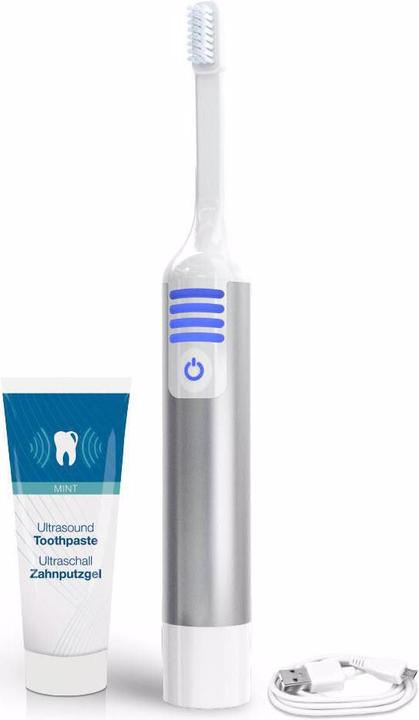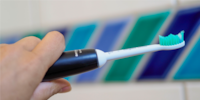

Electric toothbrushes: find the right cleaning technology
Electric brushes clean your teeth more efficiently than manual ones. Even I, a self-confessed e-brush opponent, admit that. If you happen to be looking for a new model, you should know about the following differences in technology.
Looking to buy an electric toothbrush? I feel for you. Today, finding the right model of toothbrush is almost as complicated as searching for a new laptop. To help you make up your mind, here’s an overview of the three most common cleaning technologies.
Rotating-oscillating
Rotating-oscillating toothbrushes are also called rotary brushes. A motor makes their brushes move back and forth in a semicircle while pulsating at the same time. In this way, they generate a higher movement speed than a manual toothbrush. The vibration removes plaque and dirt, which is then carried away by the rotation. So all you have to do is hold the device onto your teeth from all sides. The toothbrush does the rest.
Since the brush head is typically small and round, you can only tackle one tooth at a time. This can be tedious and requires patience and precision. You can, however, reach even the teeth at the very back of your mouth. It’s important not to put too much pressure on the teeth and gums with the brush. Especially with sensitive gums, this can lead to inflammation or recession. That’s why more and more models are equipped with pressure control, which lets you know if you’re applying too much pressure. Due to the mechanical component, the brush heads wear out faster than with a sonic or ultrasonic toothbrush, so you should factor in this cost. Compared to sonic and ultrasonic toothbrushes, rotating-oscillating ones are also louder. Rotary toothbrushes are entry-level models that offer you an improved alternative to manual models.
Sonic technology
Toothbrushes with sonic technology make an elongated brush head vibrate. The bristles don’t rotate. Depending on the model, these toothbrushes achieve a frequency of up to 62,000 oscillations per minute and, thanks to their shape, clean a larger area at once than a rotary brush – similar to a manual toothbrush. Although the sonic motion loosens plaque, you have to manually move the brush head up and down to remove it. As with a manual toothbrush, the toothbrush is placed at a 45-degree angle. Make sure not to apply too much pressure, as this can damage the tooth enamel. All in all, however, this technology requires less pressure than a rotary brush, which results in gentler cleaning process.
Ultrasound technology
Ultrasonic models are usually more expensive and, unlike sonic and rotary ones, don’t work mechanically. That means instead of friction, this technology works with the transmission of vibration (up to 1.6 million per second), which is generated by magnetic pulses. With the help of a special toothpaste, which is applied to the teeth beforehand, foam bubbles are formed. When they burst, they remove dirt and plaque from your teeth. As this process is particularly gentle, this technology is suitable for people with very sensitive gums. On top of this, ultrasound has an antibacterial effect. With these toothbrushes, you also work your way from tooth to tooth.
First published on 16.09.2019
As a massive Disney fan, I see the world through rose-tinted glasses. I worship series from the 90s and consider mermaids a religion. When I’m not dancing in glitter rain, I’m either hanging out at pyjama parties or sitting at my make-up table. P.S. I love you, bacon, garlic and onions.
Practical solutions for everyday problems with technology, household hacks and much more.
Show all







